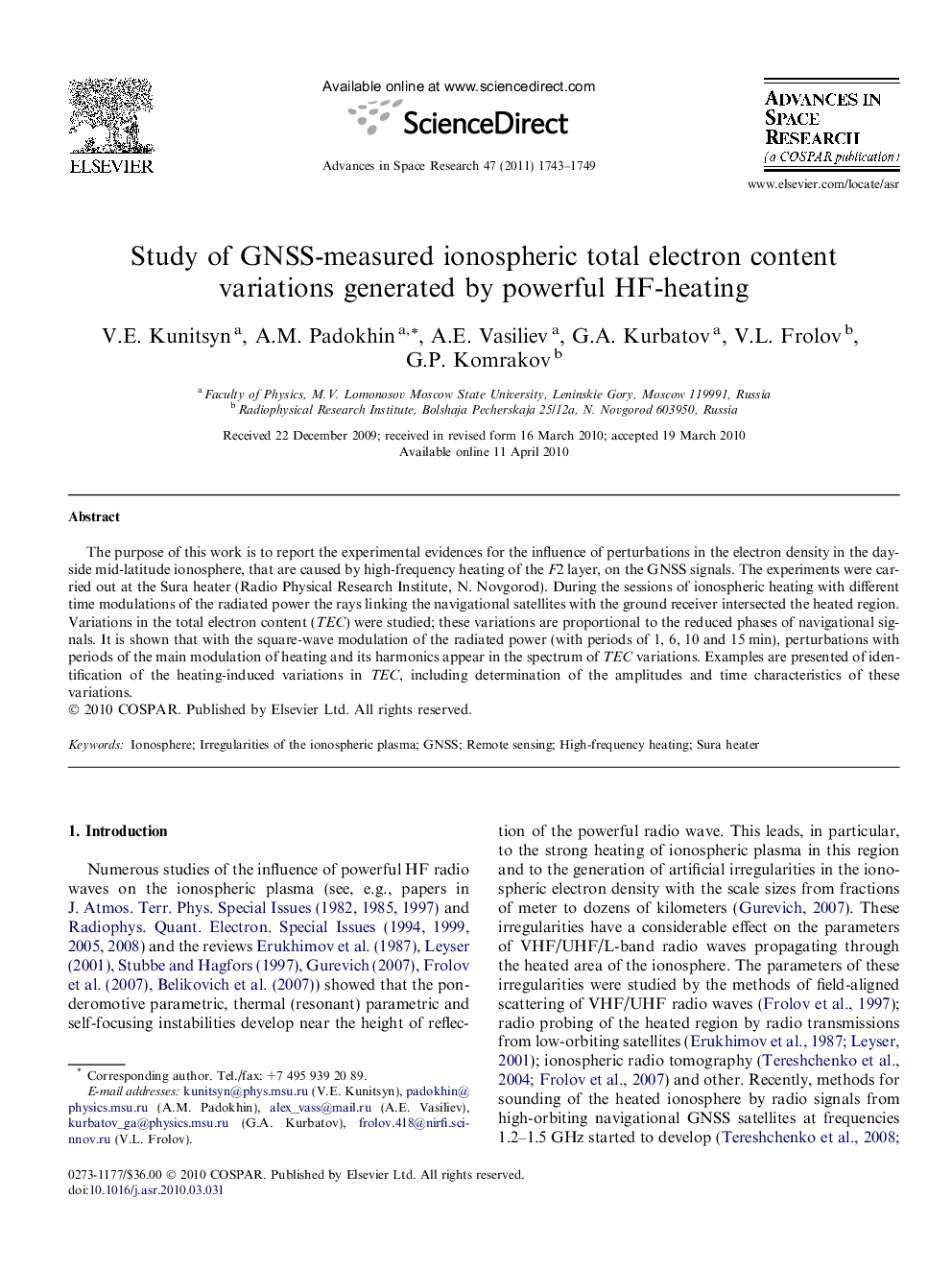| Article ID | Journal | Published Year | Pages | File Type |
|---|---|---|---|---|
| 1766074 | Advances in Space Research | 2011 | 7 Pages |
The purpose of this work is to report the experimental evidences for the influence of perturbations in the electron density in the dayside mid-latitude ionosphere, that are caused by high-frequency heating of the F2 layer, on the GNSS signals. The experiments were carried out at the Sura heater (Radio Physical Research Institute, N. Novgorod). During the sessions of ionospheric heating with different time modulations of the radiated power the rays linking the navigational satellites with the ground receiver intersected the heated region. Variations in the total electron content (TEC) were studied; these variations are proportional to the reduced phases of navigational signals. It is shown that with the square-wave modulation of the radiated power (with periods of 1, 6, 10 and 15 min), perturbations with periods of the main modulation of heating and its harmonics appear in the spectrum of TEC variations. Examples are presented of identification of the heating-induced variations in TEC, including determination of the amplitudes and time characteristics of these variations.
